Hyla intermedia
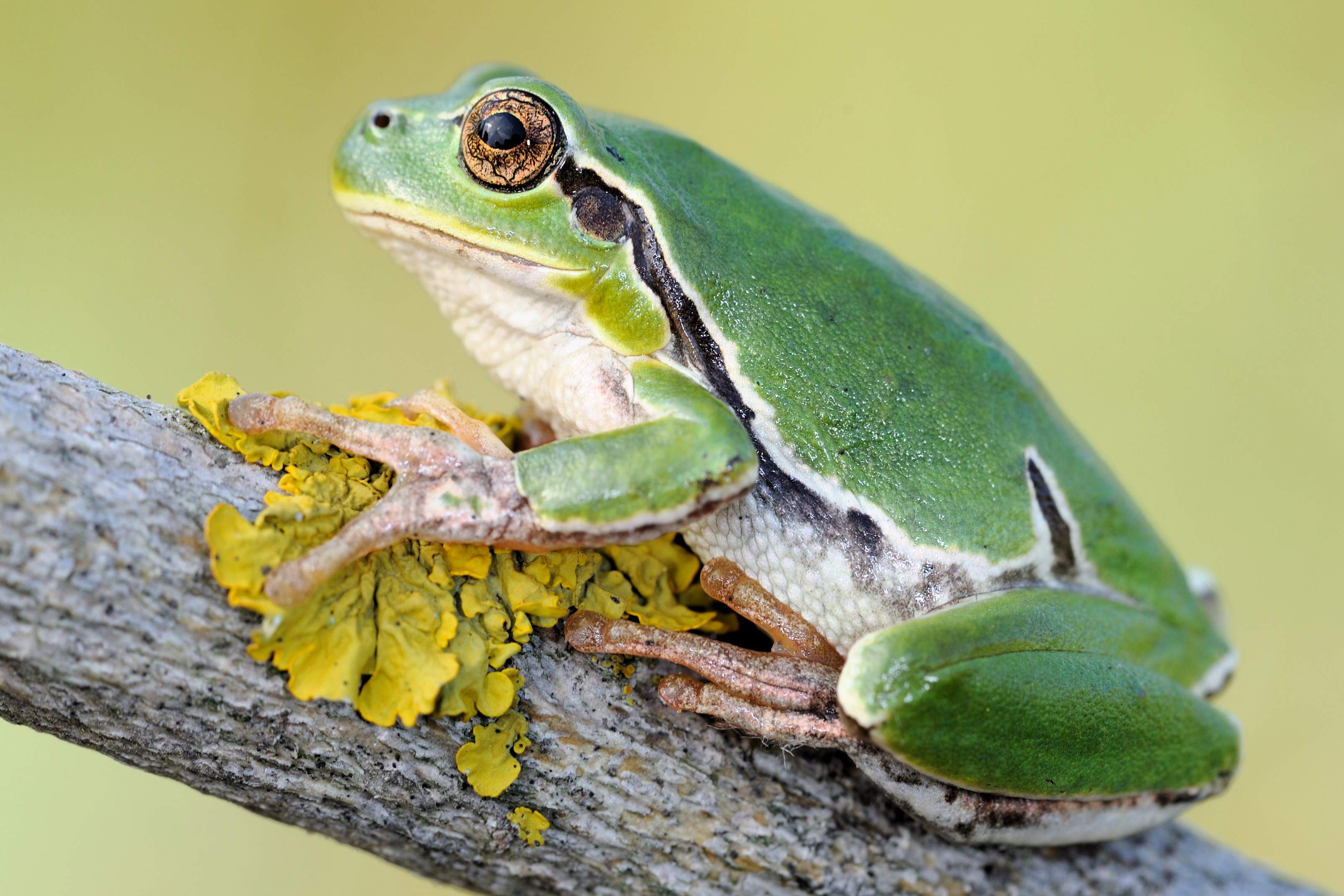

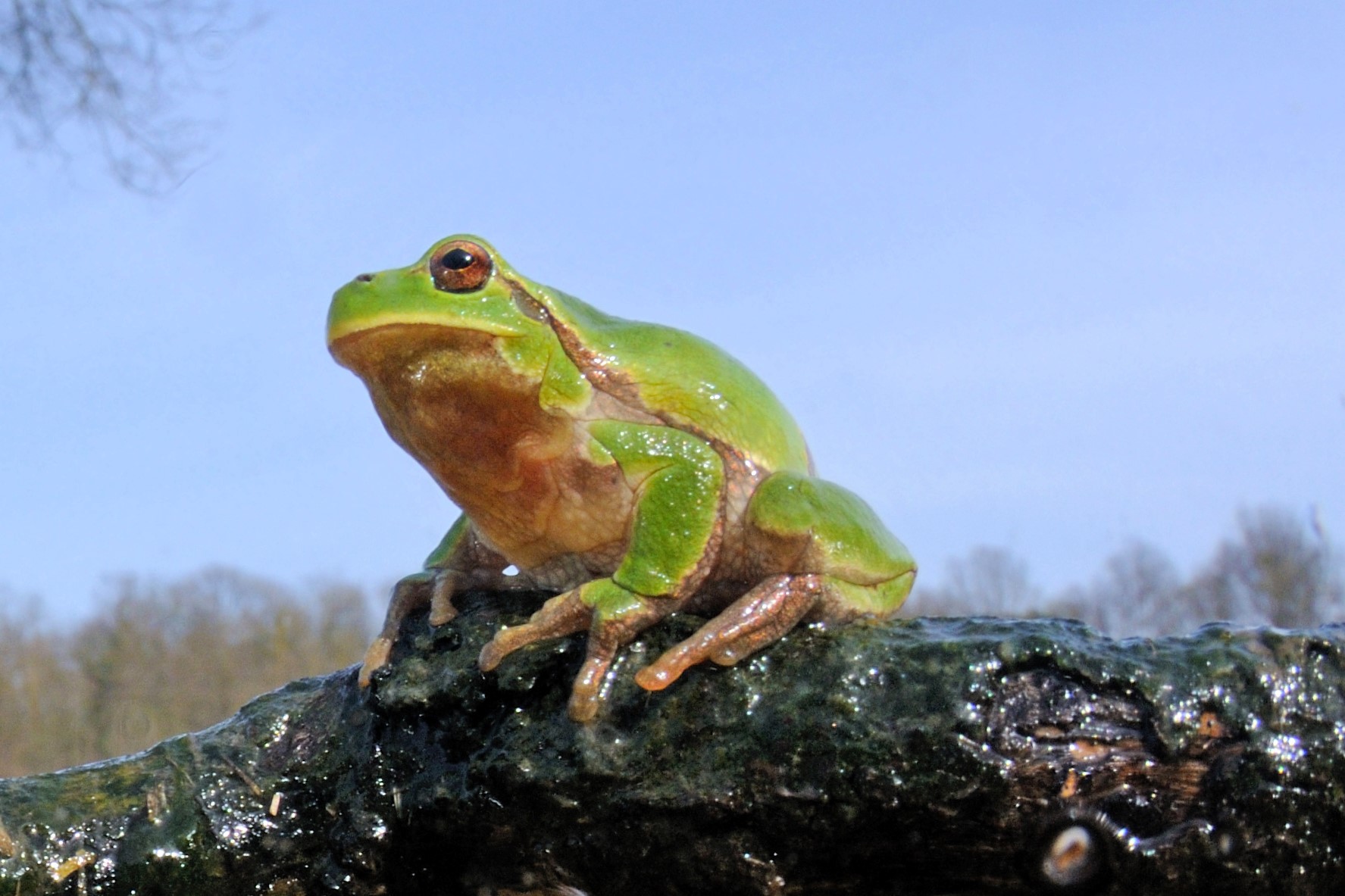
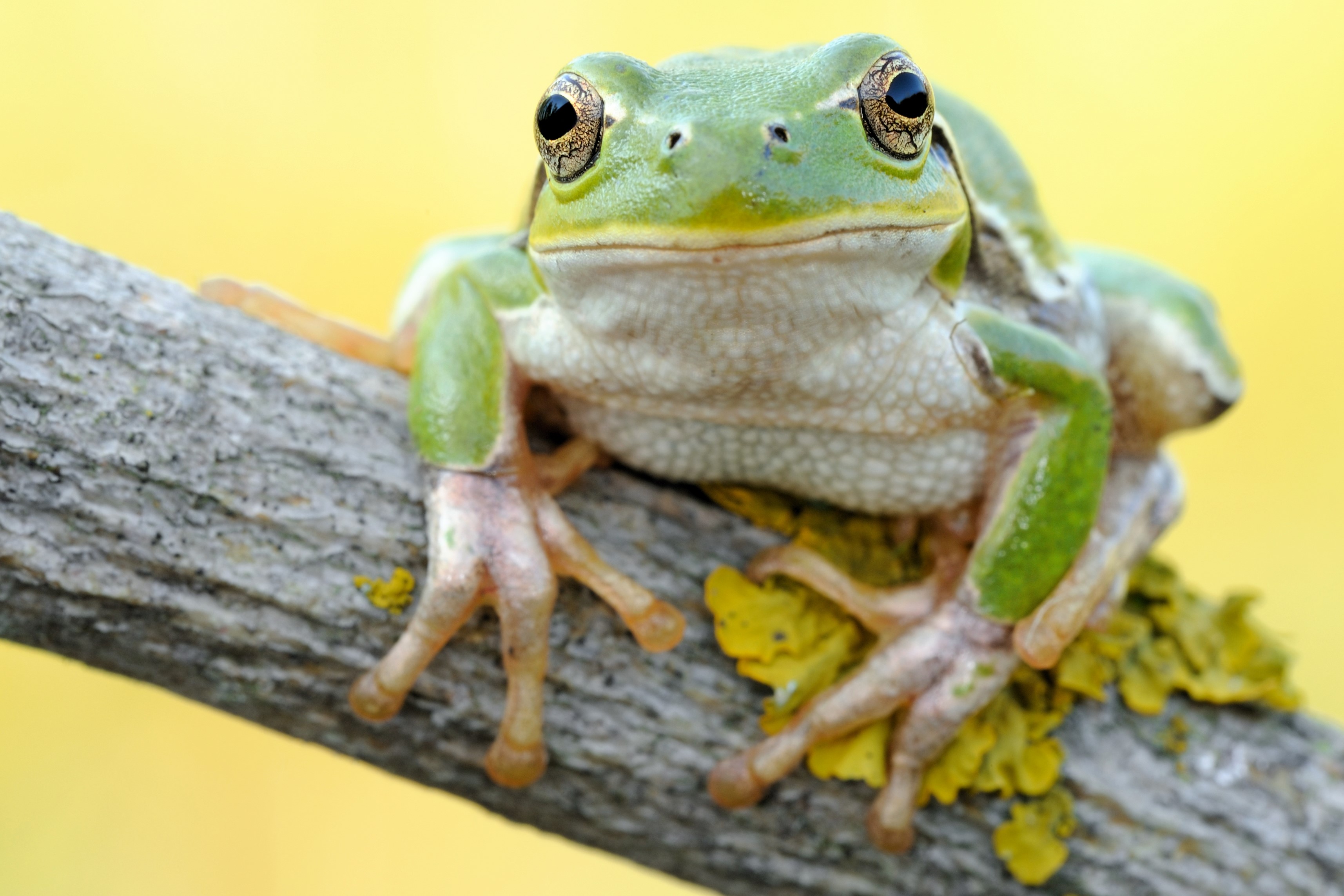
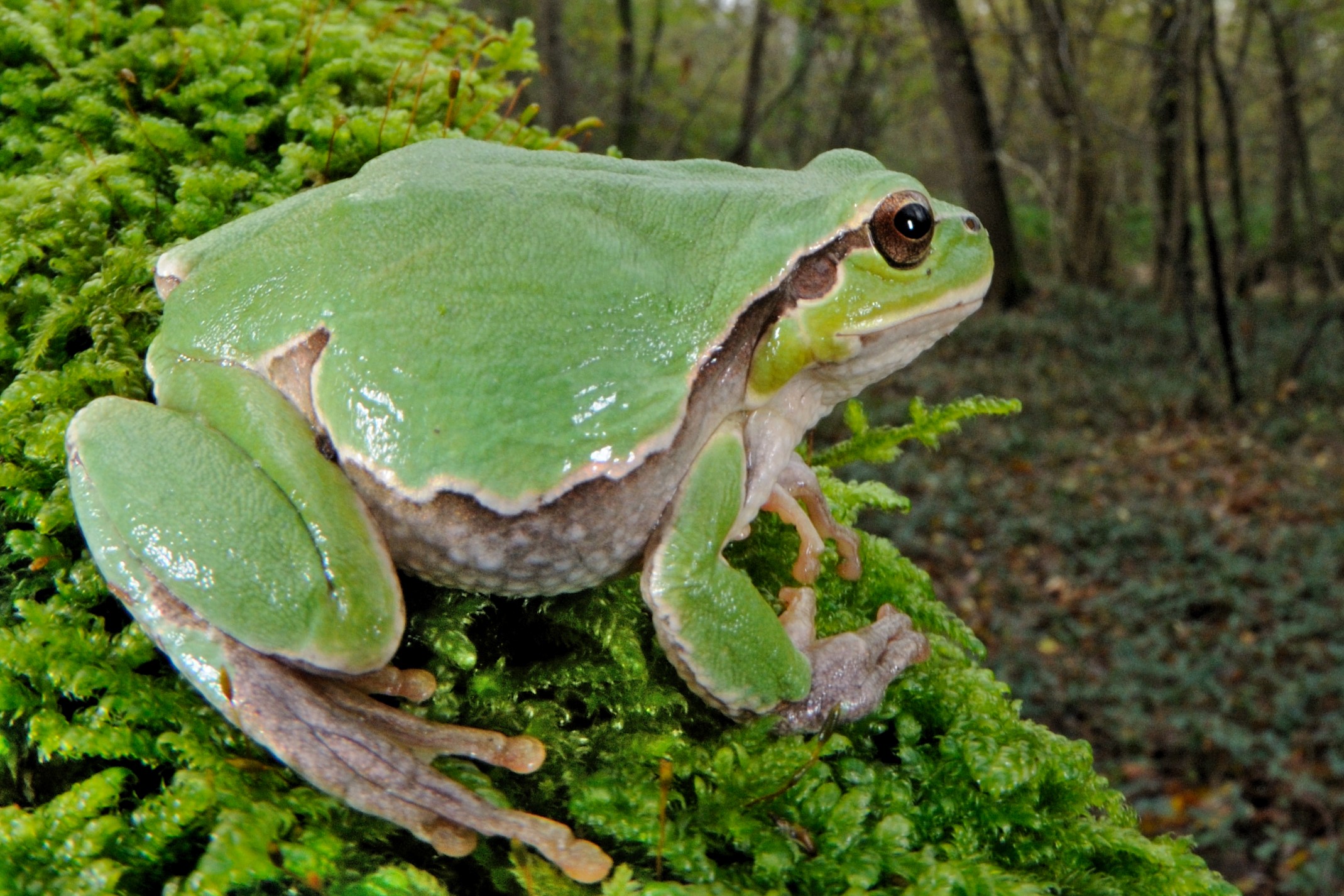
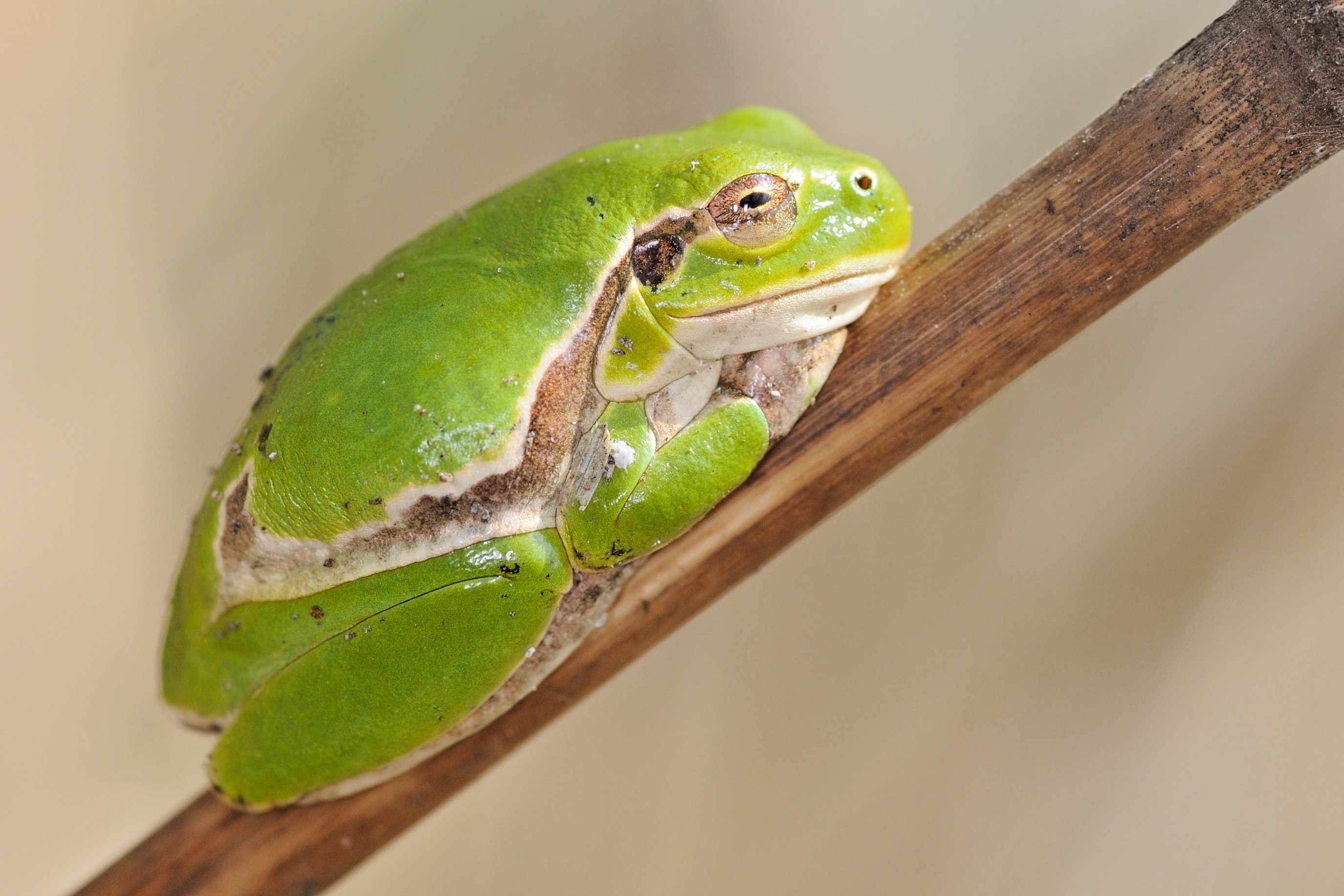
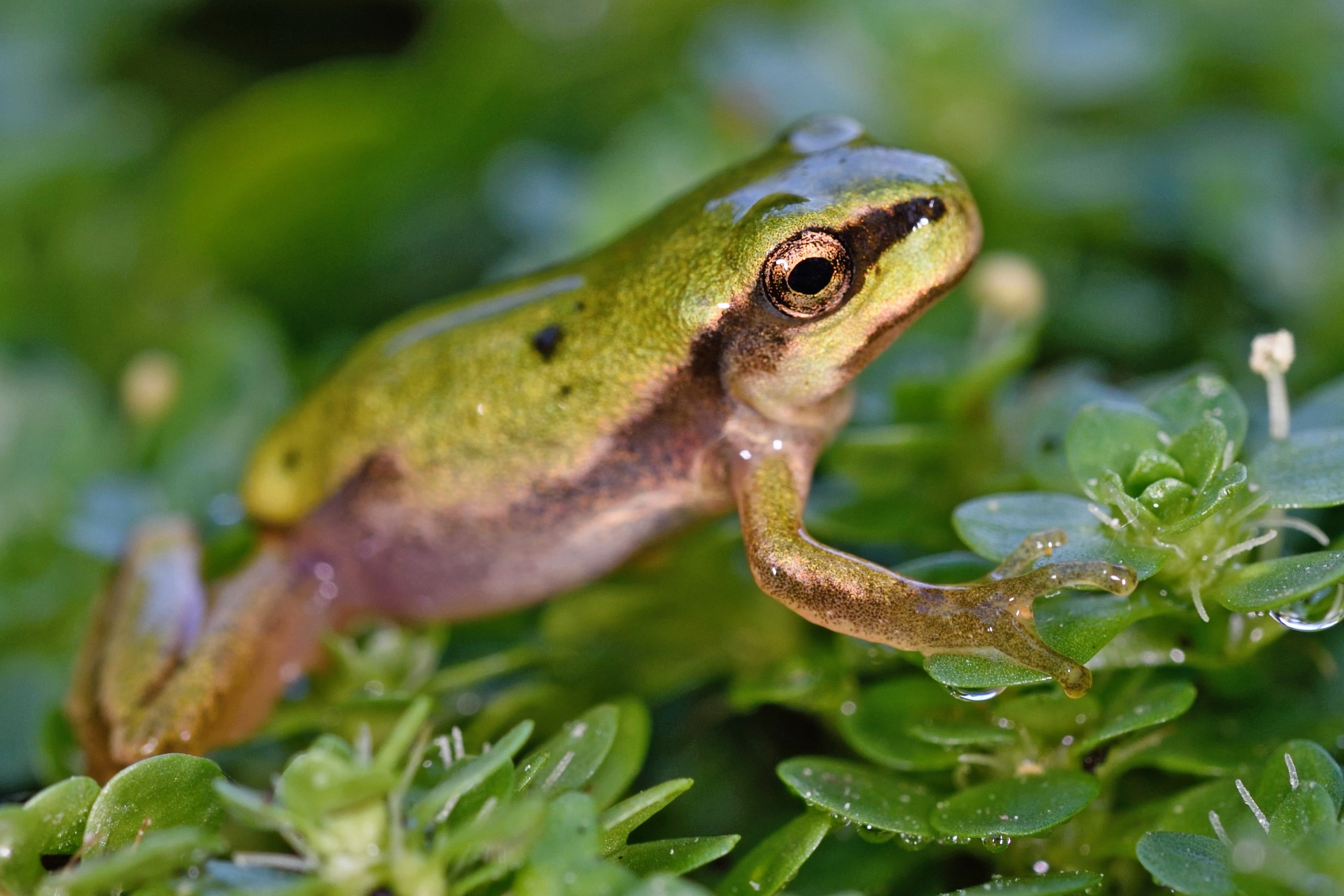
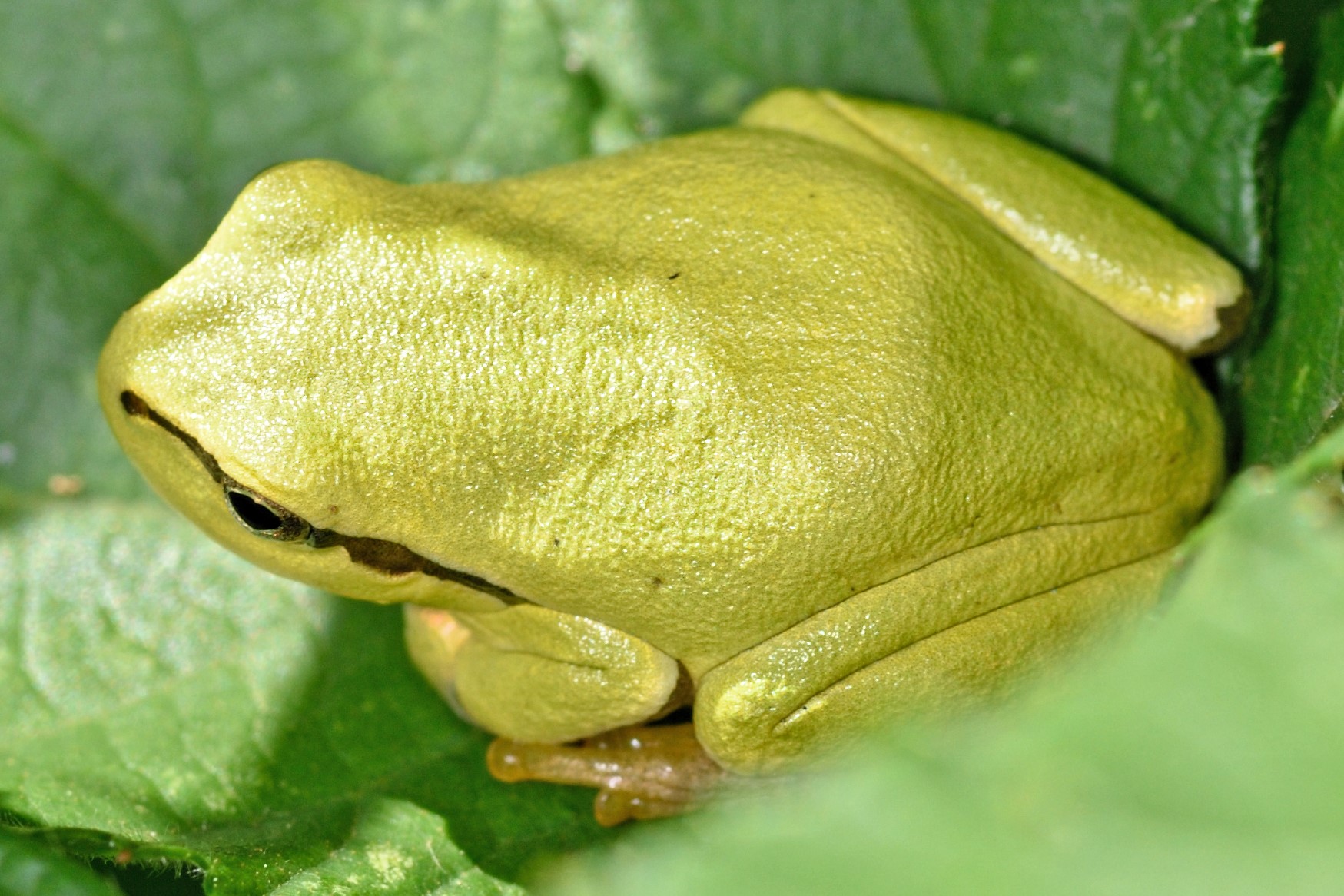
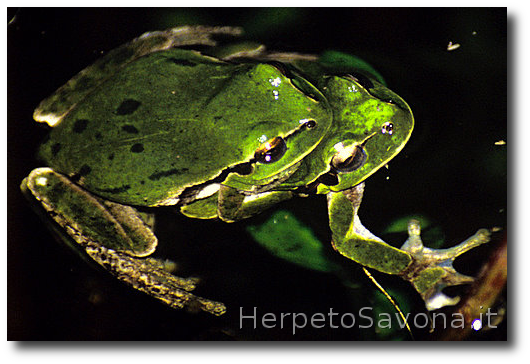
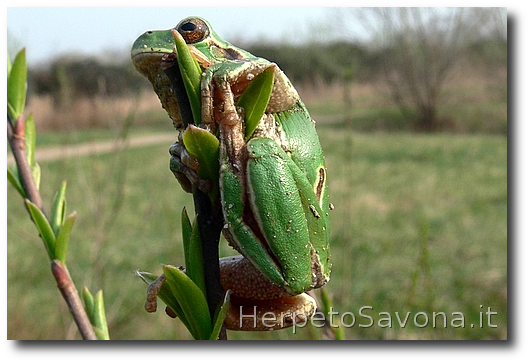
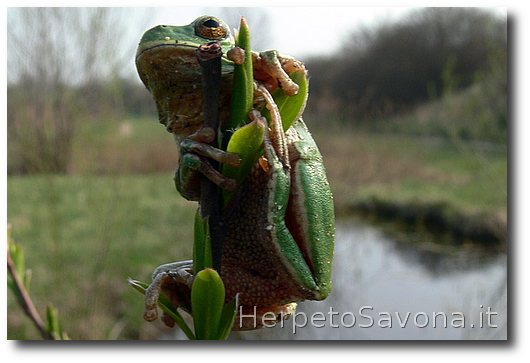
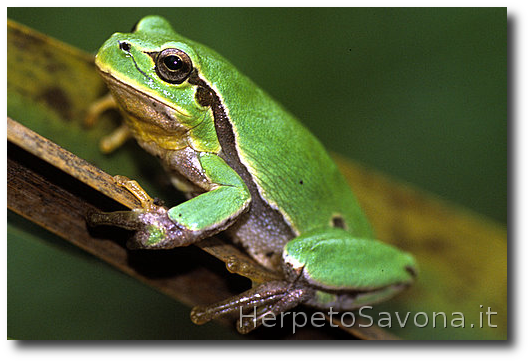
Amphibia → Anura → Hylidae → Hyla → Hyla intermedia
Rana verda, Granögia
The Italian Tree Frog ( Hyla intermedia ) is a small anuran amphibian generally characterized by a bright green coloration, although this may vary from light green to darker shades, sometimes with slight yellowish or brownish tinges.
The body is slender, with smooth skin and a well-developed webbing on the hind feet, typical of arboreal species.
Adults have marked sexual dimorphism: males generally reach sizes between 1.2 and 1.6 in (3 and 4 cm), while females are slightly larger, reaching up to 1.8 in (4.5 cm).
During the breeding season, males develop a conspicuous brownish vocal sac and nuptial pads on their thumbs.
Females are distinguished by larger size and the absence of a well-developed vocal sac.
Tadpoles, upon hatching, measure about 0.20–0.24 in (5–6 mm) and are greenish-brown with golden spots.
In western Liguria, the Italian Tree Frog ( Hyla intermedia ) has a rather fragmented distribution, extending from sea level up to about 3,300 ft (1,000 m) in altitude.
The species is present in the main valleys – such as Valle Arroscia, Valle del Lerrone, and Valle Impero – as well as in some coastal areas where wetlands, including secondary ones, persist.
Fragmentation is mainly linked to the loss and degradation of suitable habitats caused by urbanization and landscape modification.
The Italian Tree Frog ( Hyla intermedia ) prefers humid environments with abundant tree or shrub vegetation.
It is typical of reed beds, riverbanks, ponds, small lakes, ditches, as well as traditional farmland with hedges, vegetable gardens, orchards, urban parks, and gardens, provided there is standing or slow-flowing water present at least during the breeding period.
The presence of shrubs and trees is essential since this species spends much time on stems and elevated leaves.
The activity of the Italian Tree Frog ( Hyla intermedia ) is predominantly nocturnal and crepuscular.
The active period usually goes from early March to October, with a prolonged winter dormancy phase, generally from November to March, which varies according to elevation and climate.
The breeding season starts between March and April and may continue into the early summer months.
Males are known for their powerful and repetitive calls, clearly audible tens of meters away, produced to attract females to oviposition sites, consisting of still or slow-moving waters rich in aquatic vegetation.
Reproduction occurs with the laying of 200–1,000 eggs in small groups anchored to submerged vegetation.
The larval cycle generally lasts 2–3 months, after which metamorphosis occurs.
The diet of the Italian Tree Frog ( Hyla intermedia ) varies according to development stage.
Adults are mainly insectivorous, preying on a range of small invertebrates including:
Tadpoles mainly feed on algae and organic detritus present in the water.
The main threats to the survival of the Italian Tree Frog ( Hyla intermedia ) in western Liguria are related to:
The Italian Tree Frog ( Hyla intermedia ) is renowned for its ability to change color according to temperature, humidity, and physiological state, shifting from bright green to more dull or yellowish tones.
The fingers are equipped with adhesive discs that allow agile climbing through branches, leaves, and reeds.
The intensity and power of the calls emitted by males during spring nights make it one of the most powerful calls among European amphibians relative to body size.
The species is considered an excellent indicator of the environmental quality of wetland ecosystems.
In western Liguria it is monitored by scientific organizations and nature associations, which track demographic trends and the integrity of the remaining populations, considering it a key element for ecological connectivity in the area.